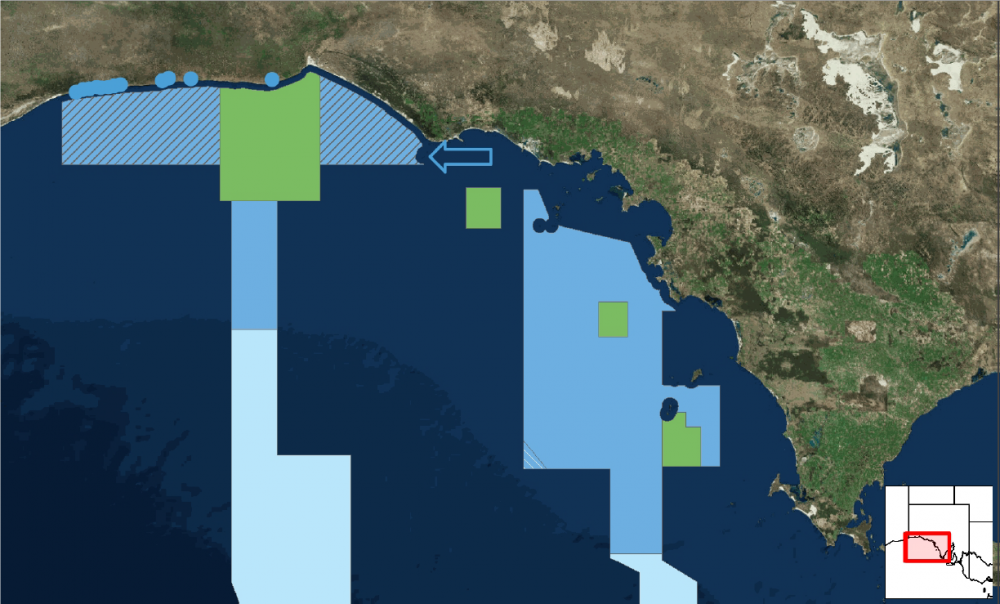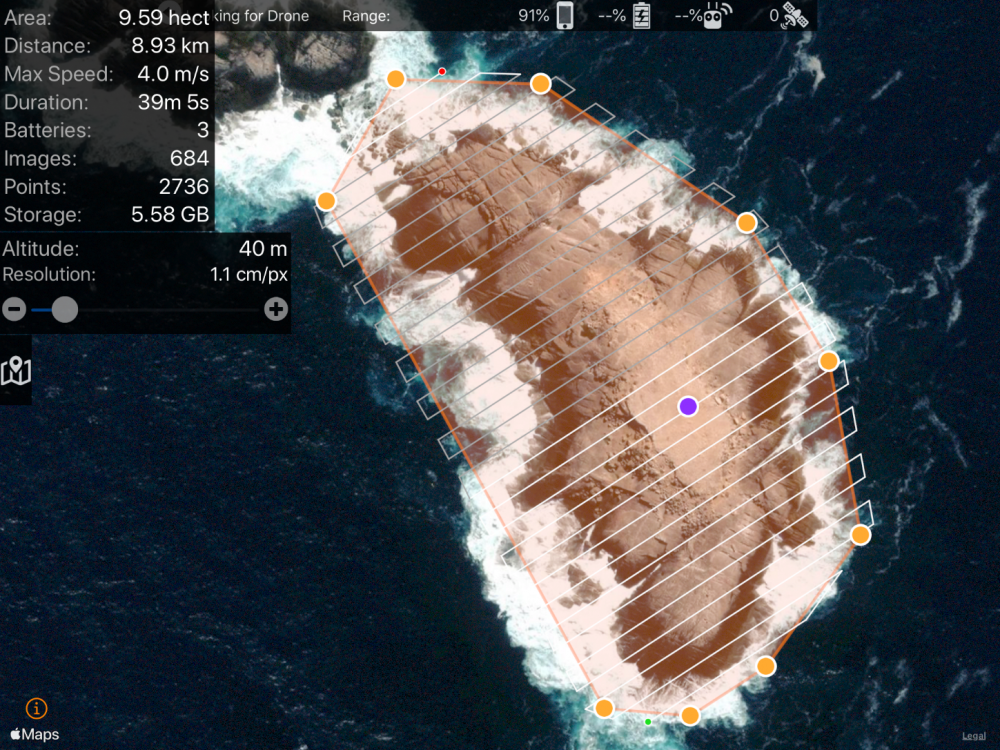Where
Great Australian Bight Marine Park, Far West Coast Marine Park, Nuyts Archipelago Marine Park, Nullarbor Wilderness Protection Area.
Who
Dirk Holman (Department for Environment & Water (DEW)), Mel Stonnill (DEW), Pat Walsh (DEW), Sam Henschke & Tim Anderson (Helifarm), Jarrod Hodgson (University of Adelaide), Parks Australia.
When
Summer / Autumn 2019 (Bunda Cliffs)
Winter / Spring 2019 (Nuyts Reef)
Why
The Australian sea lion (Neophoca cinerea) is Australia’s rarest seal species. They predominantly live on the offshore islands of Nuyts Archipelago, and in isolated colonies along the Great Australian Bight coastline off South Australia. The surrounding coastal and offshore waters are biologically important as foraging areas, including the Great Australian Bight Marine Park.
Listed as vulnerable under the Environment Protection and Biodiversity Conservation Act 1999, the recovery of their population is at risk from marine debris, habitat degradation, prey depletion, disease, human disturbance and entanglement in commercial fishing nets. Population recovery is hindered by a complex life history which includes an 18-month breeding cycle, high pup mortality, and extreme female site fidelity. This last factor means there is little genetic exchange between colonies, so each group is viewed as a closed population.
For managers, this means that every colony needs to be monitored to assess the effectiveness of protection efforts, including the Far West Coast and Great Australian Bight Marine Parks. A critical way to do this is to count the number of pups born in each breeding season and compare those figures over a period of consecutive seasons, to provide population trend estimates for each colony.
How
To survey the Great Australian Bight’s remote colonies (Figure 1) we use an unmanned aerial vehicle (UAV) that takes high-resolution photos every three seconds.

Figure 1. Australian sea lion colonies at the Bunda Cliffs (pale blue dots) and at Nuyts Reef (blue arrow) in relation the Great Australian Bight, Murat and Western Eyre Marine Parks. Department for Environment and Water
At the Bunda Cliffs, we complete three surveys every breeding season, photographing between 16 and 23 colonies each time. At Nuyts, we survey every island twice during the breeding season and we also complete traditional ground counts of pups. This allows us to compare survey methods and we will continue this approach until we’re confident in the rigour of the UAV approach at this location.
To complete a survey along the Bunda Cliffs, we fly the UAV along a pre-programmed route at a height of 40 metres and speed of 4 metres per second. This ensures the photos are clear enough to allow for the analysis (Figure 2). At Nuyts, this process is more challenging because the camera must be kept perpendicular to the ground to ensure we obtain accurate counts.

Figure 2. A pre-programmed flight path is entered into the unmanned aerial vehicle to survey an island at Nuyts Archipelago. Department for Environment and Water
Back in the office, we use the photo software program Agisoft Metashape Pro to stitch all our photos together, creating detailed, accurate photos of each colony. The software geometrically corrects the images, so the final images are as accurate as a map (Figure 3). These products are used to count and classify individual animals (Figure 4).

Figure 3. Photo software is used to stitch images taken with the unmanned aerial vehicle to create a detailed photograph of remote Australian sea lion colonies. Department for Environment and Water.

Figure 4. Photo software is used to analyse composite photos of remote Australia sea lion colonies to identify the location and type (see key) of each individual animal. Department for Environment and Water.
What did we learn?
Using the combination of UAV and photo software, we can comprehensively “see” colonies along the Bunda Cliffs for the first time! Previous surveys relied on what could be seen using binoculars from vantage points along the cliffs. Using the UAV, we can look around headlands, behind rocks and into caves, meaning pup counts are more accurate.
The 2019 results reveal an approximate 300 per cent increase in pup numbers, as compared to earlier results from the traditional cliff top surveys. These results are encouraging but it is important to remember that the numbers don’t reflect a true increase, as the survey method is improving count accuracy. This new method can be easily conducted multiple times during a breeding season, meaning we can access near-continuous data which will allow us to detect population changes more quickly and more accurately.
At Nuyts Reef, the ground counts revealed an increase in the numbers of pups, from 105 in 2015 to 122 in 2019. The comparison of survey methodologies suggests the UAV isn’t working here as well as other sites. This is due to a combination of factors including:
- Survey timing - they were completed early in the breeding season when very young pups are mostly hidden.
- Survey timing – flights were conducted early in the day when large shadows were present.
- The presence of large boulders, small overhangs and caves which meant that small pups were obscured given the camera angle.
We will use these lessons to improve future surveys at Nuyts. Overall, using UAVs to complete remote surveys improves our access to data and because it reduces animal disturbance, means that this data is more accurate. From an Australian Marine Parks management perspective, the outputs of this research will help to better understand the population dynamics of a species we know uses several parks in the South-west Marine Parks Network. More broadly, remote surveying methods have application in many marine parks, so we’re committed to advancing innovative approaches to research.
What next?
The Bunda Cliff colonies are small, producing under 20 pups each, which make them vulnerable to colony failure. Conversely, the Nuyts Reef colony is one of only five in the state that produces over 100 pups, so it represents a significant component of the overall population. Therefore, it is vital that we continue to monitor both regions.
Australian sea lion colonies are known to undergo seasonal oscillations in pup production, so an important aspect of this long-term monitoring is understanding what changes are in response to pressures and what changes are part of normal seasonal variations. The partnership between Parks Australia and the State Government is ongoing to support this important research into this iconic resident of the Great Australian Bight.


